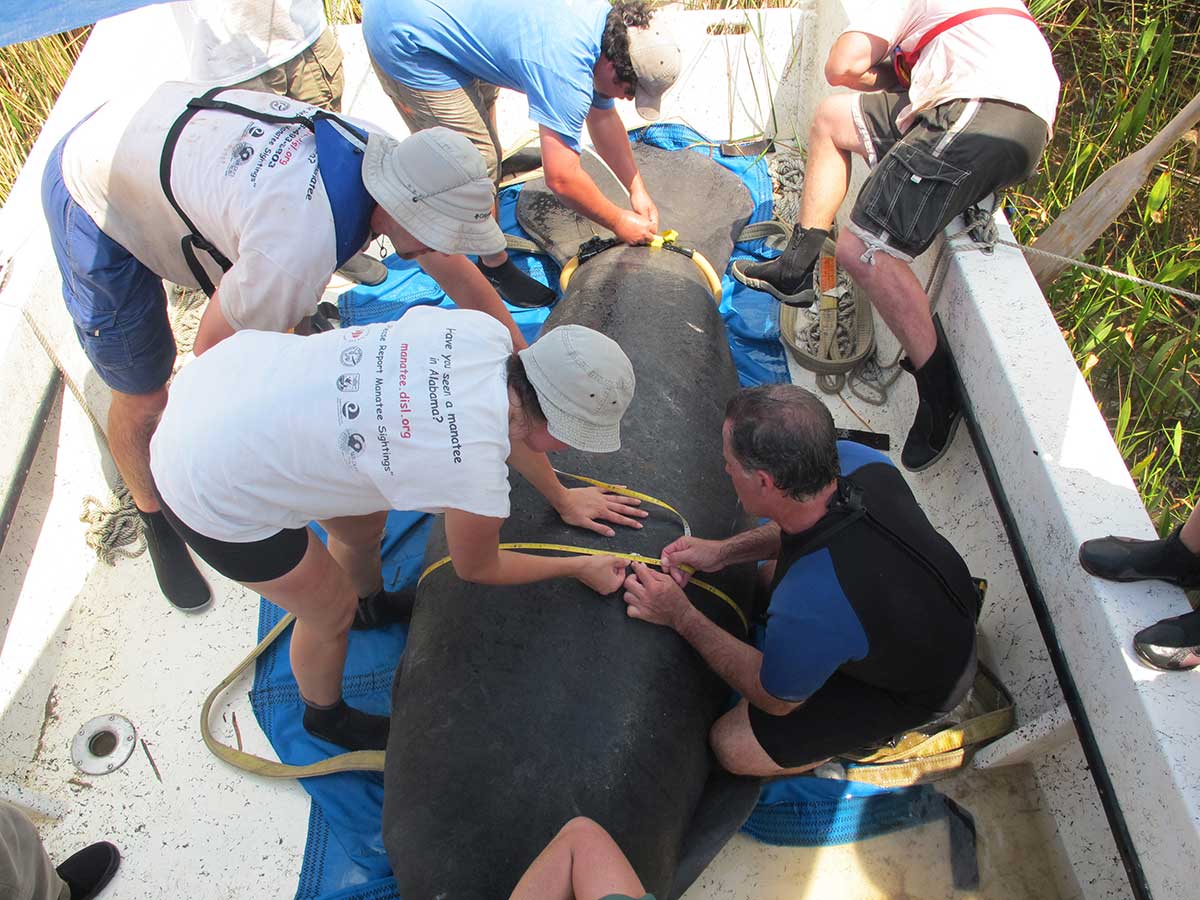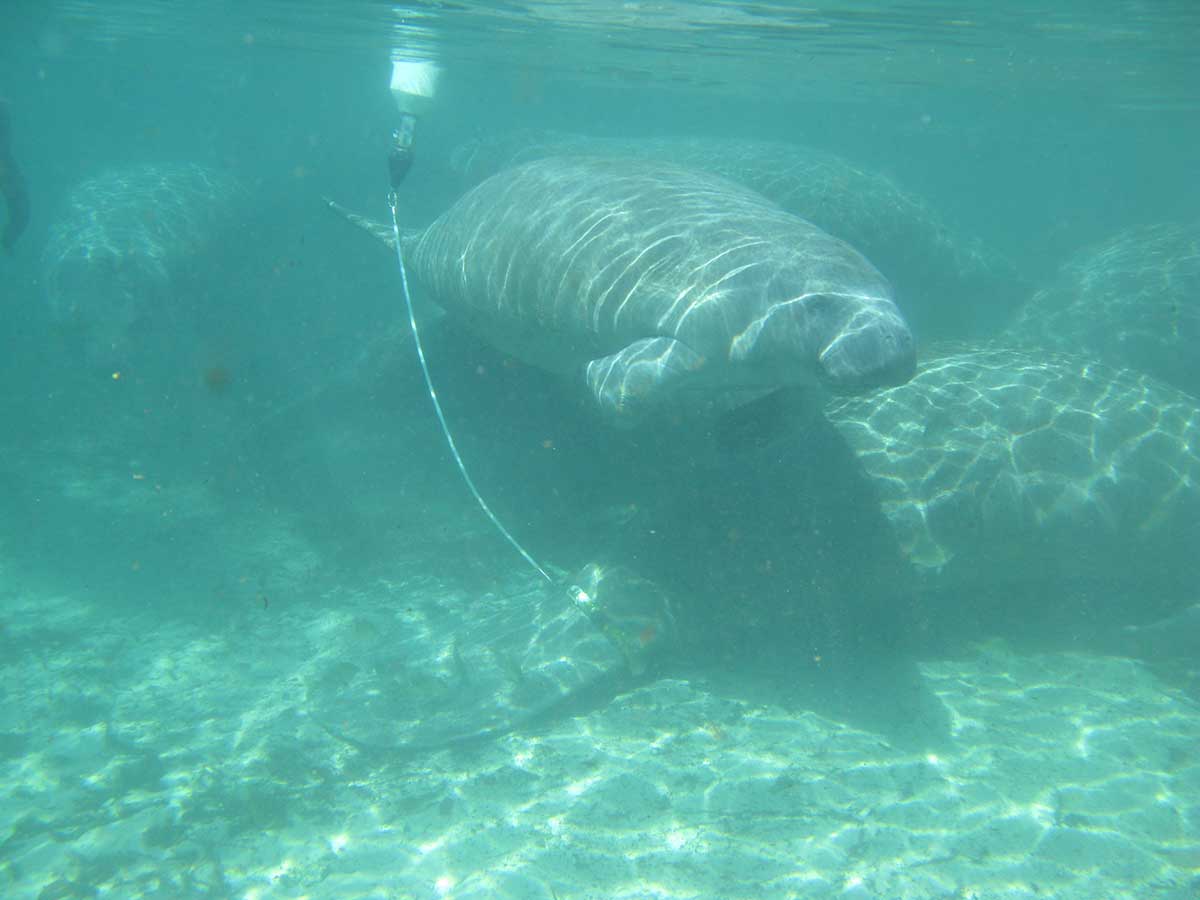
Data collected by researchers at the Dauphin Island Sea Lab offer insight into a global-scale analyses of large animal movements.
The article, "Convergence of marine megafauna movement patterns in coastal and open oceans", was published in PNAS Monday, February 26 and resulted from a collaboration with researchers around the world, including Dr. Ruth H. Carmichael and University of South Alabama graduate student Allen Aven.
The collaborative research analyzed more than 2,700 tagged and tracked individuals and identified similarity in movement patterns across 50 marine vertebrate species, with millions of years of evolutionary distance among the different taxa and fundamentally different types of movement, such as flight, swimming, paddling. Data from manatees originally tagged in Alabama waters by Dr. Carmichael and colleagues were included in the analysis. Manatees provide a unique contribution to the dataset, because they move in nearshore and inland waters not typically occupied by other marine mammals.

"Preferred habitat was most important to determining global movements of large marine animals, with patterns being simpler in open ocean and more complex close to coasts due to the greater complexity within coastal micro-habitats," Dr. Carmichael explained. "Unlike in terrestrial animals, movement patterns of large marine animals were independent of body length and mass, likely because it is easier to move through water."
In addition to tracking the movements of tagged manatees, Dr. Carmichael’s research team also operates the Dauphin Island Sea Lab’s Manatee Sighting Network and the Alabama Marine Mammal Stranding Network. Through these networks, her team works to define manatee movement, habitat use, and causes of mortality along the northern Gulf of Mexico coast.
"Results of this study suggest that major ocean change, such as, reduced Artic sea ice cover and sea level rise, which change habitat type, may have significant effects on global movements of marine animals, including the manatees and dolphins that are common along our local coast" Dr. Carmichael said. "Hence, understanding habitat as well as evolutionary history will be important to predicting how animals respond to these changes."
For more on this publication, click here.